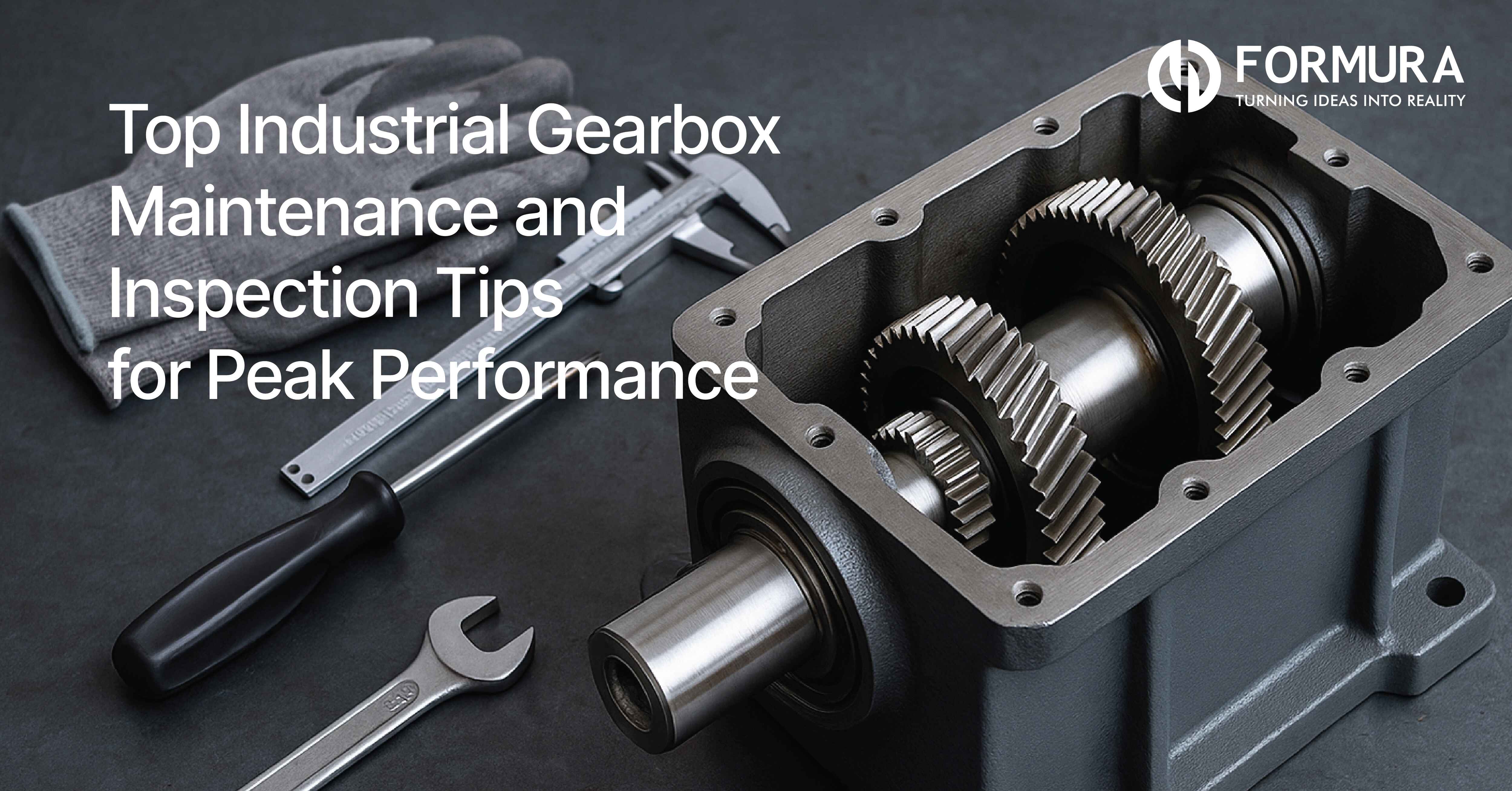Top Industrial Gearbox Maintenance and Inspection Tips for Peak Performance

Industrial gearboxes are vital for efficient operations across industries. Their failure can cause costly downtime, repairs, and productivity loss.
Consistent preventive maintenance and inspections can help detect and resolve gearbox issues early, maximize equipment lifespan, and ensure smooth operations.
This article will provide a comprehensive guide to industrial gearbox maintenance, offering more than 10 essential tips for inspecting and maintaining your industrial gearbox to ensure peak performance. Let’s explore key maintenance actions that will keep your equipment running smoothly.
Top Industrial Gearbox Maintenance & Inspection Tips
1. Establish a Consistent Lubrication Schedule
Lubrication is the lifeblood of any gearbox. The majority of gearbox failures are directly related to improper lubrication—either too much, too little, or using the wrong type. Always follow the manufacturer’s recommended oil type and viscosity. Implement a strict schedule for oil changes and top-offs, using a high-quality lubricant. This is the single most important gearbox maintenance tip to prevent premature wear.
2. Monitor Oil Temperature and Level
Continuously monitor the oil level and temperature during operation. An overheating gearbox is a clear sign of a problem, such as improper lubrication, misalignment, or overload. An abnormally low oil level can indicate a leak, which needs immediate attention. Regular checks are a fundamental part of how to inspect a gearbox.
3. Conduct Regular Visual Inspections
A simple visual inspection can reveal a lot. Check the gearbox housing for signs of leaks, cracks, or rust. Examine the seals for wear and damage. Look for any loose bolts or mounting hardware. A quick visual check can often catch a minor issue before it becomes a major repair.
4. Perform Vibration Analysis
Vibration analysis is a powerful diagnostic tool for industrial gearbox inspection. Abnormal vibrations can be a symptom of various issues, including gear wear, bearing damage, or misalignment. A trained technician can analyze vibration patterns to pinpoint the exact source of the problem, allowing for targeted repairs and preventing catastrophic failure.
5. Listen for Unusual Noises
A healthy gearbox should operate with a consistent, low hum. Any new or unusual noises—such as grinding, clunking, or whining—are red flags. These sounds can indicate a serious problem with the gears, bearings, or shafts. Promptly investigate any new sounds as part of your industrial gearbox repair strategy.
6. Analyze Oil Samples
Oil analysis is a form of "blood test" for your gearbox. By taking regular oil samples and sending them to a lab, you can identify contaminants like metal particles (indicating gear or bearing wear), water, or dirt. Oil analysis provides an early warning system for internal component degradation, long before it becomes visible or audible.
7. Ensure Proper Alignment
Shaft misalignment can cause excessive vibration, leading to premature bearing and seal failure. Use laser alignment tools to ensure the gearbox is perfectly aligned with the motor and the driven equipment. Proper alignment reduces stress on all components and extends the life of the entire system.
8. Control Operating Temperature
Keep the gearbox's operating temperature within the manufacturer's recommended range. High temperatures accelerate the degradation of the lubricant and can damage seals and other internal components. If the gearbox is running hot, investigate the cause—it could be a sign of a larger problem.
9. Check for Proper Venting
Most gearboxes are equipped with vents to release internal pressure and prevent seal damage. Ensure these vents are clean and free from blockages. A clogged vent can cause pressure to build up, forcing oil past the seals and leading to leaks.
10. Maintain Detailed Maintenance Records
Keep a log of all maintenance activities, including oil changes, inspections, and repairs. Detailed records help you track the health of each industrial gearbox over time, identify recurring issues, and predict when major maintenance might be needed. This data is invaluable for a truly proactive maintenance program.
11. Conduct a Thermal Scan
Using a thermal camera to perform a scan of the gearbox while it’s running can quickly identify hot spots. These localized areas of high temperature can indicate excessive friction from a worn bearing or gear set, allowing you to pinpoint problems without disassembly.
Conclusion
Ignoring industrial gearbox maintenance tips is a costly mistake. The price of an unplanned repair, including lost production time, emergency service fees, and replacement parts, is always far higher than the cost of a consistent, proactive maintenance program.
By following these tips for inspecting and maintaining your industrial gearbox, you can create a comprehensive strategy to maximize the lifespan of your equipment, ensure the safety of your personnel, and minimize unplanned downtime. A well-maintained gearbox is a reliable one, providing the peace of mind and operational efficiency your business depends on.
Is your gearbox maintenance program up to par? Need expert help with a persistent gearbox issue? Contact our team of specialists for a diagnostic assessment and explore our industrial gearbox services. Our gearbox services provider is ready to offer the expert industrial gearbox solutions you need to keep your operations running at peak performance.